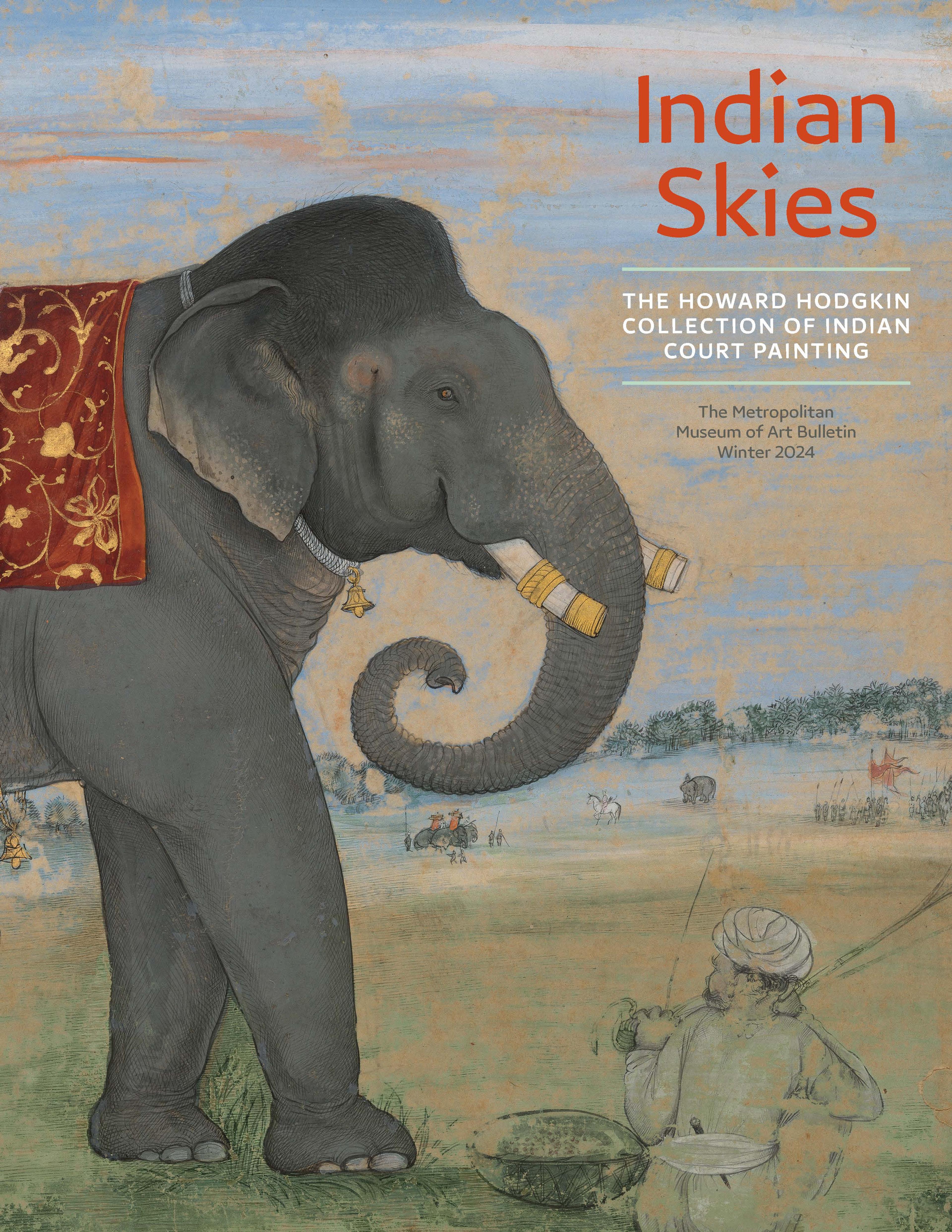Maharao Madho Singh Hunting Wild Boar
Madho Singh (r. 1631–48), founding ruler of the Kota kingdom, was celebrated nearly a century after his death as the embodiment of the highest Rajput virtues of valor, bravery, and martial skill. Dressed in hunting green, he rides down boars in a high-speed chase through rugged woodland, leaning dangerously from the saddle to thrust his punch dagger (katar) into a fleeing boar while another turns to attack him. This was a dangerous pastime, and it is rendered as high drama. The terrain, including different species of trees and other plants, was rendered in deft brushwork by an artist intimately familiar with the local landscape. The composition itself was modeled after an early seventeenth-century mural in the private quarters of the raja of neighboring Bundi Palace.
Artwork Details
- Title: Maharao Madho Singh Hunting Wild Boar
- Artist: Attributed to the Kota Master (Indian, active early 18th century)
- Date: ca. 1720
- Culture: India, Rajasthan, Kota
- Medium: Opaque watercolor, gold and tin on gold paper
- Dimensions: 19 5/8 × 24 1/2 in. (49.8 × 62.3 cm)
Framed: 24 7/8 × 29 7/8 × 1 in. (63.2 × 75.9 × 2.5 cm) - Classification: Paintings
- Credit Line: Howard Hodgkin Collection, Purchase, Gift of Florence and Herbert Irving, by exchange, 2022
- Object Number: 2022.216
- Rights and Reproduction: Image © Ashmolean Museum, University of Oxford
- Curatorial Department: Asian Art
More Artwork
Research Resources
The Met provides unparalleled resources for research and welcomes an international community of students and scholars. The Met's Open Access API is where creators and researchers can connect to the The Met collection. Open Access data and public domain images are available for unrestricted commercial and noncommercial use without permission or fee.
To request images under copyright and other restrictions, please use this Image Request form.
Feedback
We continue to research and examine historical and cultural context for objects in The Met collection. If you have comments or questions about this object record, please complete and submit this form. The Museum looks forward to receiving your comments.
